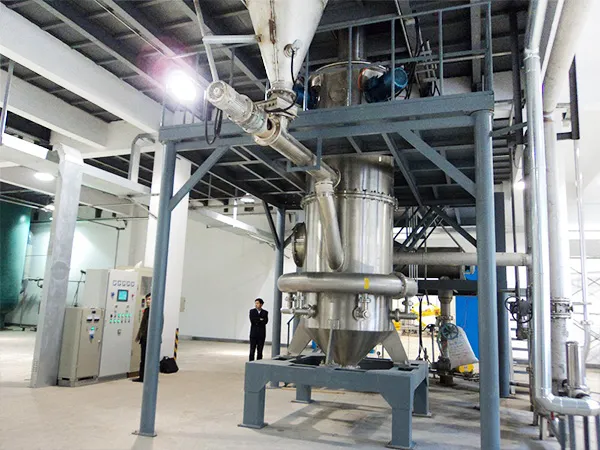This article describes the principle of jet mills. They are fluid energy pulverizers used to micronize solid materials. The article describes how jet pulverizers operate using fluid power and the factors that affect the quality of the final product. The article also mentions the good and bad sides of jet pulverizers. It gives examples of common products processed using this technology.

How dose a jet mill function?
Micronization is the process of reducing particle size. The resulting particles are less than 10 microns in size. Jet mills pulverize chemicals, pharmaceuticals, pigments, and minerals. They also work on materials like heat-sensitive and corrosive ones.
In most cases, micronization is a black box. It makes fine powder from crude fragments. Jet mills operate in pressed air, gas, or high-pressure superheated vapor. Jet mills have no moving parts. They thus avoid contamination from contact with external grinding media. It’s also great for grinding heat-sensitive and waxy products. It makes no abrasive heat.
The functioning of a jet mill depends on the application of fluid power. Let’s take a pancake spiral jet mill as a demonstration. Within a superficial, round chamber, pulverizing and classification procedures occur. High-pressure air or heavy steam is sent into this chamber. It is sent through specially made nozzles. The nozzles are placed evenly along the outer wall. The instructions are for a jet. They are for a smaller, made-up, circle within the main one.
During the procedure, the material is fed into this vortex along an engineered tangent circle and increases. The steep slopes near the jet are solid. They trigger the product’s suspended fragments to collide. This makes them lower themselves by attrition and accident. The decrease comes from fast collisions between fragments of the material. No grinding media is included. The jet liquid exits via an outlet at the chamber. It either leads or draws the pulverized particles with it to the cyclone. Heavier, oversized fragments are held in the grinding chamber by centrifugal pressure. They stay there until they are micronized to a desired size.
Requirements for jet mill feed
The size of the feed injector sets the feed fragment size. Larger mills of 200-300 mm need a 1.5 mm feed. Smaller mills will call for a better feed size as necessary.
The final product’s quality can be affected by many elements. These include operational and physical factors. These factors include the rate at which material is fed right into the system, the size and pressure of the nozzle, the angle at which the nozzle is positioned, the speed of the airflow, the size of the particles being fed in, the size and width of the handling chamber, and the size of the electrical outlet whereby the item is released. You can change all of these variables during the procedure. But, it’s much harder to change the feed price once the process has started to get the particle-size you want.
The jet mill itself does not control the spiral jet milling process. It involves many parts. They must be put in and managed well. These devices consist of a fluid power resource, a feeder, a cyclone separator, a dirt collector etc.
Jet milling example
The need for pharmaceutical products is growing. These products consist of carefully ground energetic materials and excipients. These medicines need particles that are 2-20 microns in size. They need a steep curve and few penalties and oversized bits. Jet milling is a great way to reduce the size of drug particles. It’s useful for drugs where particle size affects distribution.
Benefits of jet mills
It has no moving parts. Cleaning it is easy. It takes very precise measurements. The temperature is consistent and it makes no heat. But, there are some drawbacks to jet mills. They are not very efficient. The tools are big and need many accessories. The process gas flow is high.
Common product processed
Agrochemicals: Deltamethrin, Carbendazim, Carbaryl, Antiseptic, Herbicide, Fungicide etc.
Chemicals: Adipic acid, Barium titanate, Calcium chloride, Chromium oxide, Catalyst and so on.
Ceramics: Aluminium moisturize, Silicon carbide, Ferrite, Glass, Zirconium oxide etc
Minerals: Bauxite, Gypsum, Graphite, Mica, Talc, Tentalum ore etc
Paints: Carbon black, Fluorescent pigment, Titanium dioxide etc
Pharmaceuticals: Amino Acid, Antibiotics, Aspirin, Guanylate, Furosemide, Penicillin, Vitamin Substance etc.